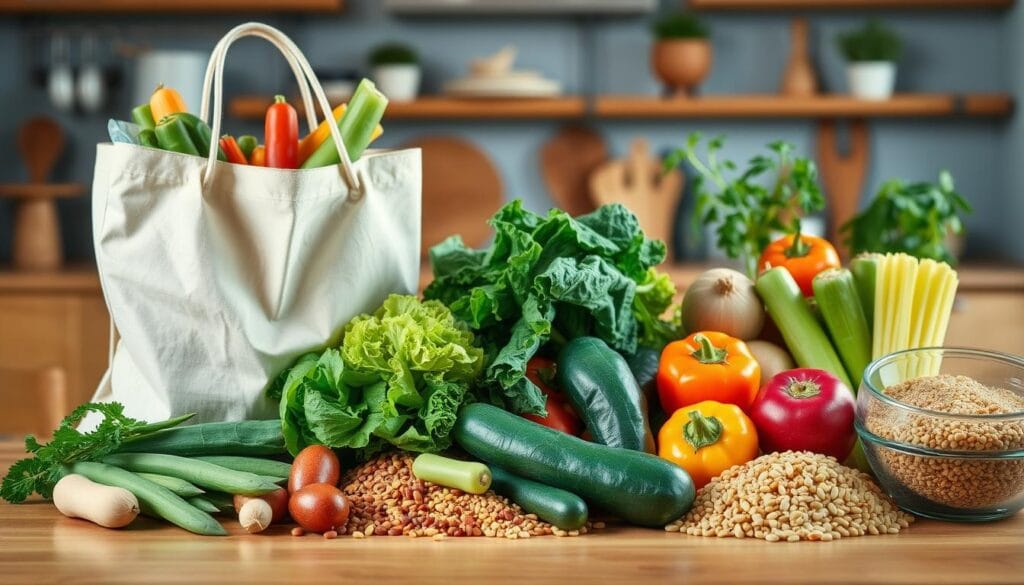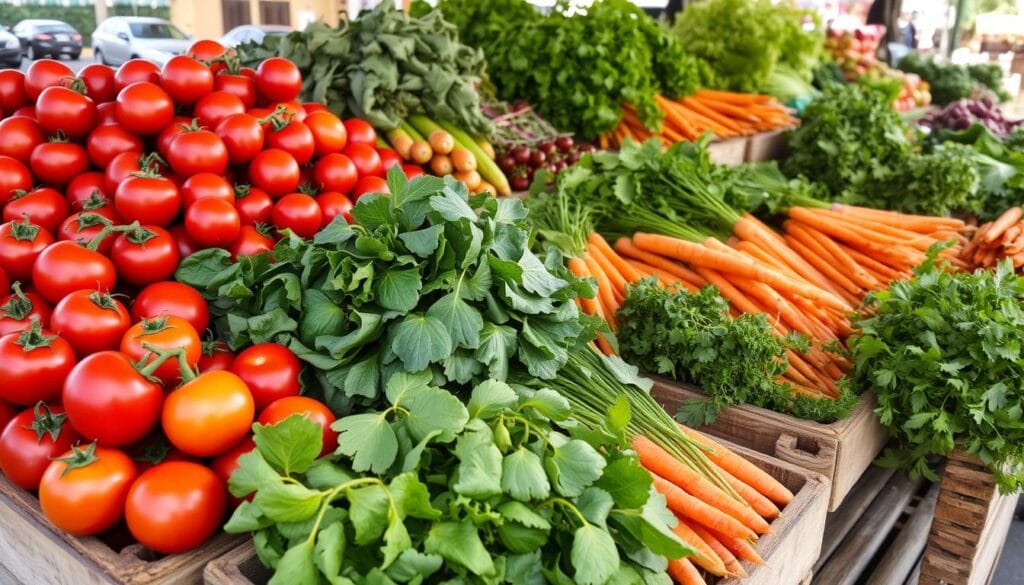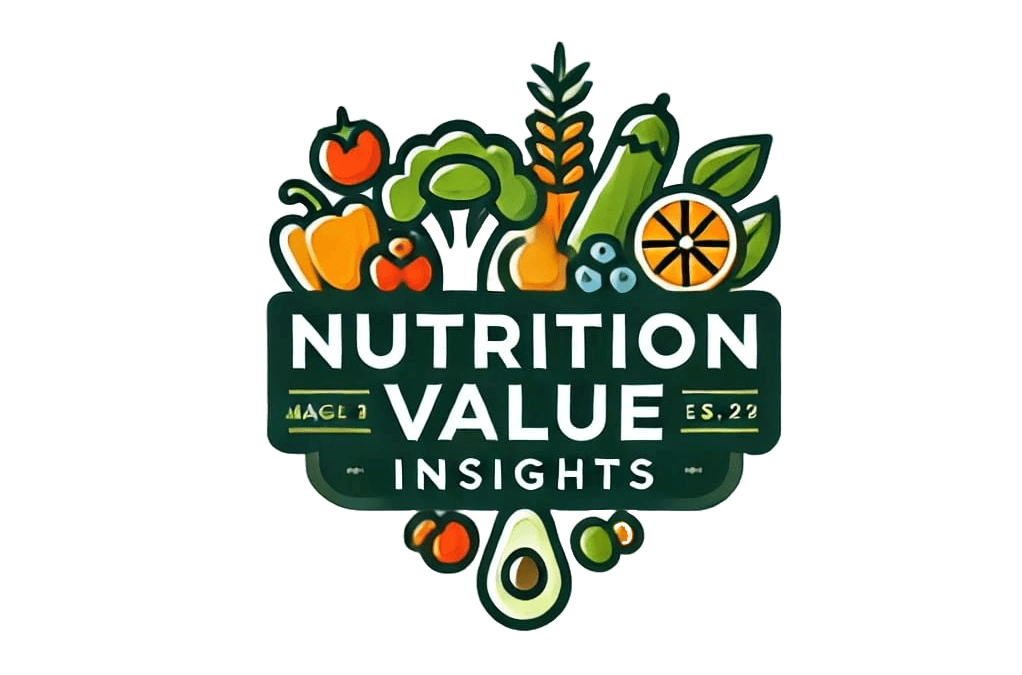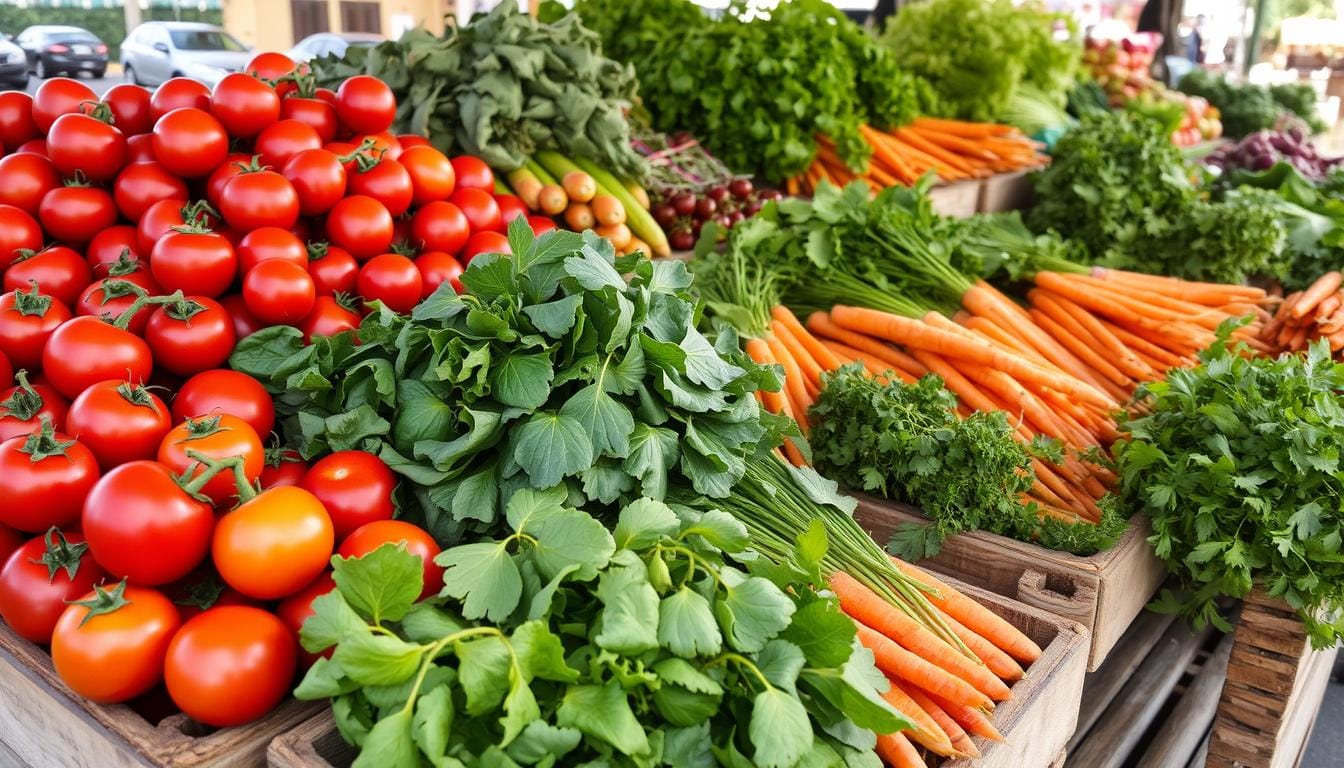Affordable Nutritional Solutions: How to Eat Healthy on a Budget Amid Inflation
Soaring food prices make it hard for many American families to eat well. The U.S. saw a 10.9% rise in food costs from July 2022 to July 2023. This is the biggest increase since May 1979. Foods like eggs, butter, and flour have gone up by over 20% in price.
This inflation affects more than just our wallets. Bad eating habits cost the U.S. $50 billion each year in healthcare. It’s important to eat well to stay healthy and save money in the long run.

Table of Contents
Affordable Nutritional Solutions for Everyday Meals
Preparing tasty and healthy meals at home can save money, especially when food costs are high. By choosing your ingredients and cooking methods wisely, you can enjoy cheap healthy foods, nutritious low-cost meals, and a budget-friendly healthy diet. Here are some budget-friendly tips for your daily meals:
- Plan your meals: Make a weekly or monthly meal plan to spread out different food groups and avoid waste.
- Embrace canned and frozen produce: Choose canned fruits and veggies in water, not syrup, and frozen options without added sugars or salt.
- Batch cooking and leftovers: Cook big batches of meals and turn leftovers into new dishes to save time and money.
- Utilize in-season produce: Buy fruits and veggies in season, as they’re often cheaper and more nutritious.
- Experiment with affordable protein sources: Try plant-based options like legumes, eggs, or canned fish, which are cheaper than meat.
By using these tips, you can have a budget-friendly healthy diet without losing the nutritional value of your meals. A bit of creativity and planning can help you make tasty and nutritious low-cost meals that fit your budget.
| Cost Saving Strategies | Potential Savings |
|---|---|
| Incorporating generic brands | Up to 30% compared to national brands |
| Purchasing from online retailers | Up to 50% less than grocery store prices |
| Substituting meat with alternative proteins | Up to 70% less per serving |
| Buying staple foods in bulk | Up to 20% per unit |
| Utilizing frozen produce | Up to 15% on overall food expenses |
| Meal planning and preparation | Up to 25% on food costs |
By adding these affordable nutritional solutions to your meals, you can enjoy delicious and cheap healthy foods without breaking the bank.

“Eating well on a budget is all about being creative and making the most of the resources you have. With a little planning and some smart shopping strategies, you can enjoy nutritious and affordable meals that keep your body and your wallet happy.”
Understanding the Impact of Food Price Inflation
Inflation is making everyday costs higher, especially for food. In December, food prices jumped 33.93%, up from 23.75% the year before. This is a big worry for families, especially those with less money.
Current Food Price Statistics and Trends
The United Nations says 82 million Nigerians might face hunger by 2030 because of food prices. In 2023, 4.8 million people in Nigeria’s Borno, Adamawa, and Yobe States were very insecure about food. This shows we need to act fast.
Effects on Household Budget and Food Security
Higher food prices mean people eat less and get less nutritious food. This hurts low-income families the most. It makes them stressed and worried about feeding their families well.
Health Implications of Rising Food Costs
Higher food costs hurt our health too. Malnutrition, especially in poor kids, leads to more sickness and death. In poor countries, 41% of child deaths are from not getting enough food. This is a huge problem.
“More than 80% of the population in Bangladesh relies on agriculture, with rising food prices posing a significant challenge to the community.”
Food price inflation affects our health and well-being a lot. We need to understand this and find ways to fix it. By doing so, we can help our communities stay healthy and strong.
The Connection Between Nutrition and Financial Wellness
Your health and money are closely tied. Eating well can save you a lot of money on medical bills later. On the other hand, bad eating habits can lead to expensive health problems like obesity and heart disease.
Good food helps your body and brain grow strong. It also keeps you from getting sick often. This means you might not need to spend as much on doctor visits and treatments.
A healthy diet should have lots of veggies, fruits, whole grains, dairy, and proteins. Taking care of your nutritional health can really help your financial well-being and improve your life overall.
“Preventive healthcare through proper nutrition is key to maintaining both physical and financial wellness in the long run.”
By focusing on nutritional health, you can protect your financial well-being and avoid expensive medical costs. Eating well is a smart way to stay healthy and financially stable for the future.
Smart Grocery Shopping Strategies for Budget-Conscious Consumers
With food prices going up, it’s key for those watching their budget to shop smart. Making a detailed list and buying in bulk are great ways to save. These strategies help ensure your family eats well without breaking the bank.
Creating and Sticking to a Shopping List
Plan your meals and make a detailed grocery list app. Apps like GroceryPal can find deals for you. This way, you avoid buying things you don’t need.
Best Times to Shop for Deals
Shopping at the right time can save you money. Stores give discounts on items that are about to expire. Shopping late in the day or at the end of the week can be cheaper. Stores like Food 4 Less, Grocery Outlet, and Aldi also offer budget-friendly options.
Bulk Buying Benefits and Strategy
Buying in bulk can save you a lot of money. You can get meats, frozen produce, and pantry items at a lower cost. Just remember to have enough space to store them and plan your meals to avoid waste.
By using these smart shopping tips, you can eat well and stay within your budget. It’s a great way to manage your finances during tough times.
“Strategic shopping using coupons and discount codes can lead to significant savings and frugal living.”
Budget-Friendly Protein Sources and Alternatives
Finding affordable protein sources is key when food costs rise. There are many cost-effective options to help you meet your protein needs without spending too much.
Plant-Based Protein Options
Choosing plant-based protein can save money and still provide the nutrients your body needs. Here are some affordable, protein-rich plant-based options:
- Lentils, which provide 18 grams of protein per cooked cup
- Beans, such as black beans, which offer 7 grams of protein per half-cup serving
- Tofu and tempeh, delivering 33.7 grams of protein per cup
- Peanuts, with 7.3 grams of protein per ounce
- Oatmeal, offering 5 grams of protein per cooked cup
Cost-Effective Meat Choices
If you prefer animal-based protein, there are affordable options. Choose lean cuts of beef labeled as “loin” or “round.” Buying whole chickens and cutting them up yourself can also save money. Canned tuna and sardines are great protein sources that won’t cost a lot.
Protein-Rich Meal Planning
To get more protein on a budget, add protein-rich foods to your daily meals. Use smaller portions of meat, fish, or poultry and add whole grains, beans, eggs, or veggies. Meal planning and batch cooking can also help you use your protein sources better and reduce waste.
By exploring these affordable protein options and using them in your meal planning, you can eat a balanced, protein-rich diet without overspending. Remember, a well-rounded diet that includes all MyPlate food groups is key for good nutrition.
Maximizing Nutrition with Seasonal Produce
With food prices going up, using seasonal produce is a smart move. Seasonal fruits and vegetables are often cheaper and healthier than those out of season. You can find them at local markets or discount stores.
Studies show that fruits and veggies that ripen naturally are more nutritious. They have more vitamins, minerals, and antioxidants. Eating them can lower your risk of diseases like heart problems and cancer. They also help with digestion and prevent constipation.
Buying seasonal produce has other benefits too. Local markets and farmer’s markets sell affordable produce because they save on transport and storage. Families can save money by choosing in-season items, which are often cheaper than those at big grocery stores.
| Seasonal Produce | Cost Savings |
|---|---|
| 2 medium oranges | N100 |
| Family’s weekly fruit needs | Less than N500 |
Supporting local growers and seasonal produce also helps the community and the planet. Buying affordable produce from local markets keeps money local. It also cuts down on carbon emissions from long-distance transport.
From sweet summer stonefruit to healthy winter greens, adding seasonal fruits and vegetables to your meals is tasty and budget-friendly. It’s a great way to boost nutrition without breaking the bank.

Home Cooking and Meal Prep Essentials
With food costs going up, learning to cook at home can really help. Having the right kitchen tools and storage solutions can make your meals healthier and last longer. Plus, it helps you save money.
Basic Kitchen Equipment Needs
Start by getting some key items for easy cooking. Choose durable pans like cast iron, ceramic, or stainless steel for even heat. A good blender is great for making smoothies, dips, and sauces.
An Instant Pot or pressure cooker makes cooking beans and lentils quick and easy. These tools are essential for making nutritious meals.
Batch Cooking Benefits
Batch cooking saves time and money. Double your recipes and freeze the extra for later. This way, you always have healthy meals ready when you need them.
Storage Solutions for Extended Shelf Life
Keeping food fresh is crucial. Use airtight containers and bags to store leftovers. Always cool hot food quickly to stop bacteria growth. With smart storage, your meals can last for days or weeks.
| Kitchen Essential | Price | Where to Buy |
|---|---|---|
| Glass Meal Prep Containers | $34.99 | Amazon |
| Digital Scale | $30.49 | Amazon |
| Cutting Board | $233.95 | Amazon |
| Reusable Bags | $9.99 | Amazon |
| Double-Decker Container | $14.99 | Amazon |
| Sheet Pan | Price not specified | Shop now |
| Leak-Proof Dressing Container | $12.99 | Amazon |
| Insulated Lunch Box | $17.99 | Amazon |
Home cooking and smart storage can make meals affordable and healthy. With the right tools, you can manage your food budget and keep your family healthy.
Growing Your Own Food: From Garden to Table
Growing your own food can change your life, especially when food costs rise. You don’t need a big backyard to start gardening. Even a small patio can be a garden. This way, you get fresh, healthy food and save money on groceries.
Gardening is more than saving money. It’s great for your health too. Gardening for 150 minutes a week can improve your heart health and lower diabetes risk. It can even add up to 60 years to your life.
Even with little space, urban gardening is full of options. You can use vertical gardens, containers, or join a community garden. Working with a local farmer or helping with someone else’s garden can also help you grow food.
To garden well, start small and grow. Choose easy plants that fit into your meals. Harvesting often keeps your garden healthy and gives you fresh food.
By growing your own food, you take charge of your health. You’ll feel proud of your harvest, know where your food comes from, and eat healthier. It’s a win-win for your health and wallet.
Starting your home gardening journey is easy. Just plant a seed. Begin today and enjoy a healthier, greener life.
Utilizing Food Storage and Preservation Methods
With food prices going up, using food storage and preservation can really help. These methods let you eat healthy meals without spending a lot. They also help cut down on food waste.
Freezing Techniques
Freezing is great for keeping foods fresh and full of nutrients. Fish, poultry, and veggies are often frozen quickly to preserve their goodness. Freeze-dried foods can last up to 30 years, making them a smart choice for saving money.
Canning and Preserving Basics
Canning and other methods, like using sugar or salt, can make foods last longer. Rinsed canned goods are a cheap way to get nutrients. Dried fruits and powdered milk are also good for your wallet and health.
Using the right storage and preservation methods is key. Airtight containers, labels, and following the right steps can help save money. It also cuts down on food waste.
| Preservation Method | Advantages | Considerations |
|---|---|---|
| Freezing | Retains freshness and nutrients Long shelf life (up to 30 years) Convenient for quick meal preparation | Requires dedicated freezer space Proper packaging and labeling necessary Can alter texture of some foods |
| Canning | Shelf-stable for long periods Retains nutrients better than freezing Allows for year-round access to seasonal produce | Requires specialized equipment and techniques Potential risk of botulism if not done properly May alter taste and texture of some foods |
| Drying/Dehydrating | Extends shelf life significantly Concentrates flavors and nutrients Reduces weight and volume for storage | Requires specialized equipment or oven Can be time-consuming May alter texture and appearance of foods |
By using these preservation methods, you can enjoy healthy, affordable meals. You’ll also reduce food waste. Find the best options for your family to save money on food.
Government Programs and Community Resources
With food prices going up, the government and communities are stepping in. They want to help low-income families get healthy, affordable meals. The USDA’s MyPlate website has lots of tips and resources for planning meals on a budget.
The Supplemental Nutrition Assistance Program (SNAP) helps families with food. It’s based on how much money they make and what they own. The Food Distribution Program on Indian Reservations (FDPIR) helps Native American/Alaska Native families too.
Pregnant women, infants, and kids up to 5 get help through WIC. They get nutritious foods and health advice if they qualify.
Communities are also doing their part. Community gardens give people fresh produce. Local nutrition education programs teach how to eat well without spending a lot.
There are tools like the Hunger Hotline and USDA Local Food Directories. They help find food assistance programs and resources near you. These tools help families make their food budgets go further and get the nutrition they need.
Conclusion
Eating healthy on a budget is all about planning and being creative. By planning meals, shopping smart, and cooking at home, you can eat well without spending a lot. Focus on getting the nutrients you need and watch your spending to stay healthy and financially stable.
Looking for affordable ways to get the nutrients you need is key. Try plant-based proteins, eat seasonal foods, and use new cooking methods. Cooking meals at home, making batches, and preserving food can stretch your budget while keeping your diet healthy.
It’s important to keep eating well even when money is tight. With the right approach, you can handle rising food costs and make sure your family eats well. By following the tips in this article, you can keep your family healthy and happy, even when money is tight.
FAQ
What is the current status of food price inflation in the U.S. and Nigeria?
In the U.S., food prices have gone up, with a 10.9% increase in the last year. This is the highest since 1979. In Nigeria, food prices have risen to 33.93% in December, up from 23.75% the year before.
How does rising food costs impact household budgets and food security?
Higher food costs make it tough for people to eat well. This can lead to less food, poor nutrition, and health problems. It’s especially hard on low-income families, causing stress and worry.
What are the health implications of poor diet due to high food prices?
A bad diet can cause chronic diseases like obesity and heart disease. It can also lead to stroke, diabetes, and cancer. This increases healthcare costs. Eating well is key to staying healthy and avoiding these diseases.
What are some smart grocery shopping strategies to save money?
To save, make a detailed grocery list and buy in bulk. Look for coupons and discounts. Shopping after meals helps avoid buying things on impulse.
How can home cooking and meal prep help with affordable nutrition?
Cooking at home lets you control what you eat and how much you spend. Plan meals, use leftovers, and preserve food to stay healthy on a budget.
What are some budget-friendly protein sources and meal planning tips?
Use beans, eggs, tofu, and legumes instead of expensive meat. Use smaller amounts of meat and add grains, beans, eggs, or veggies to stretch it.
How can seasonal produce and local markets help with affordable nutrition?
Seasonal fruits and veggies are cheaper and healthier. Check out local markets, discount stores, or farmer’s markets for fresh produce at lower prices than supermarkets.
What are some food storage and preservation techniques to reduce waste and save money?
Use airtight containers, batch cook, and store perishables right. Frozen, canned, or dried foods are cheaper than fresh and still nutritious.
What government programs and community resources are available to help with accessing healthy food?
The U.S. Department of Agriculture’s MyPlate website offers healthy meal planning tips. In Nigeria, the government surveys food security yearly. Community gardens provide fresh produce for those without space to grow their own.
DID OUR INFORMATION HELP YOU ?
There are no reviews yet. Be the first one to write one.

